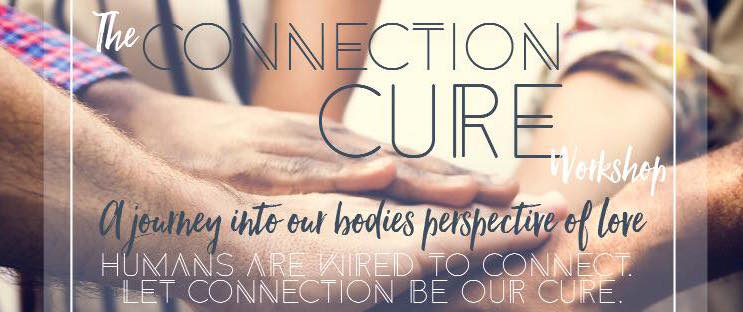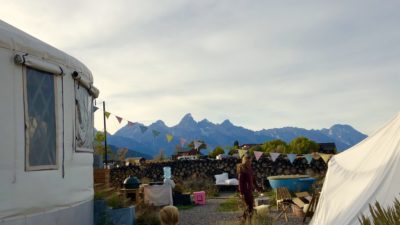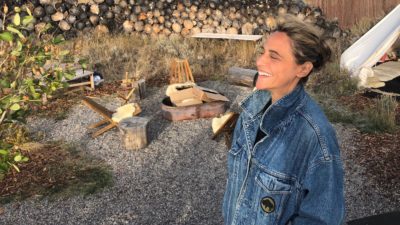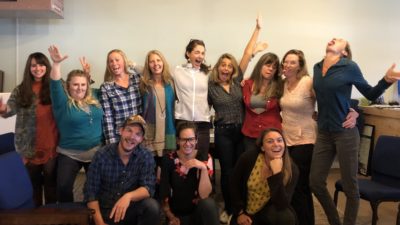Hello, I’m Lisa, and I’m lonely.
While I’m no longer afraid to admit this anymore, it’s taken me almost my entire life to do so out loud. For as long as I can remember I’ve lived in extreme opposites—either incredibly social and engaged in connection, or so lonely that I’ve spent days in my apartment telling friends, “I’m not feeling well,” rather than confess my loneliness. This pendulum has always confused me. So much so, that up until two years ago, I never would have admitted my loneliness at all. In fact, I would have done all that I could to project the extreme opposite. “I’m jovial! Joyful! Friendly! Busy! Productive! Confident! Connected!” I mean, I’m a life coach! I have to be all those things, right?! Because, who wants to work with a lonely life coach? Certainly not me.
In fact, I don’t even want to be one. I mean I want to be a life coach, just not a lonely one.
____________________
As I process and pull up the roots of my loneliness, I realize that for most of my life, my loneliness has always come hand in hand with chronic illness. It’s a bit of a chicken and egg riddle that can’t be solved, but this is what I do know: I’ve spent the majority of my life angry at my body. My earliest memories growing up in Manhattan involve doctors trying to explain the mysterious symptoms that have plagued me since early childhood. Only when I was eight years old did we discover one of the culprits—late-stage neuroborreliosis, a fancy way of saying “chronic lyme disease.” Doctors put me on high dose IV antibiotics and visiting nurses stopped by my house throughout the day to change needles. Migraines and joint pain suddenly became my new normal, as the medicine waged “war with my body.” This terminology never left me. My body was something I needed to fight in order to feel good.
I imagine this is where my loneliness began. I couldn’t stand to be inside myself, and it felt as if I stepped one inch beside my body in order to survive. If being in my body was painful, why be in there at all? And because I rarely inhabited myself, it became difficult for me to let love in and express vulnerability. I rarely asked for support, and during my chronic bouts of illness, I would shy away from connection to protect myself from vulnerability.
This isn’t something I’ve always known about myself, and I’m still uncovering the bits and pieces of thread the weave this story together. Throughout my adolescence, I was mostly happy, I had a deep love for my friends, and connecting with others made me feel alive. Being with people seemed to be the easy part, but it was going inside and feeling emotion that really frightened me. When I would cry, I’d sit in my closet and shut the door, or cover my face with a blanket so no one could see me. My deepest parts remained shut, and they stayed that way into my teenage years and early twenties. Intimacy was a code I couldn’t crack.
The first time I broke open was in Swaziland as a Peace Corps Volunteer at the age of twenty-three. In fact, it was there that I full on collided with emotion. The intensity of living in a country with the highest rate of HIV/AIDS in the world, made it impossible for me to avoid pain, sadness, and anger, and at the same time, impossible to avoid love, community, intimacy, and support, too. I found connection and belonging at funerals and night vigils – the one place where grief brought me closer to others; over those two years I was never alone in my pain. Instead there was a reciprocal love present in the community, an openness, and a need to be vulnerable in order to survive. Even amidst trauma, I felt the healthiest, most grounded, and the most vibrant, in my life.
When I returned to New York City two years later, I spent my time longing for the same connection and community; the depth of shared experience that I had in Swaziland, but I was searching for something that was impossible to replicate. When I couldn’t find it, I made up a story that it could only exist across the world on another continent. And so, every year I waited to return, and did so for the next ten years. Soon, Swaziland became the only place where I gave myself permission to fully feel.
Meanwhile, when I returned to life in NYC, I would feel increasingly lonely and my health rapidly declined. Doctors couldn’t identify the cause of my illness. As my lyme had resurfaced, I was also diagnosed with a host of other things: epstein barr, autoimmune disorders, fibromyalgia, adrenal fatigue, myofascial pain disorder, mono…the list goes on.
There were no answers in this waiting space, and I was absolutely terrified. I was afraid people would stop believing me. I was afraid I had pushed everyone away. I was afraid I would never get better. And so, I hid; I retreated. I learned to hermit, to hide away, to hibernate, to never ask for support, because I could do this alone—couldn’t I? I kept my loneliness a secret. I worked from home during the day, spent nights in, sometimes going out of my way to make my loneliness worse by not answering texts or phone calls. Even when I was social, I felt a heaviness inside. I was afraid to be totally honest because I feared judgement. It was a whirlpool that was spinning me around and around, occasionally pushing me to the top for air.
In that dark space I befriended anger and shame. I began to doubt my relationship with my body, not only shaming it, but I aggressively shouted and cursed at it for failing me. Each day, I was stepping further and further away from myself.
Before I knew it, I became a bystander to my own life.
____________________
Over the years, the more awareness I had around disconnection, disengagement, and dis-ease, the more it grew, and the more isolated I felt. It was a cycle I wasn’t sure I could escape from. In fact, I wasn’t sure I wanted to escape because here – it felt safe. But there was a growing agitation and I found that my body started to reject this stagnancy.
As my awareness grew, I started to accept my desire to change. I knew I needed to step out of my daily bouts of loneliness, shut down the computer, and get out into the world and connect. I made a promise to myself that everyday I would force myself out of my apartment to have a moment of connection with someone—anyone—as long as it felt genuine. These connections began with strangers in coffee shops, the guy at the corner bodega, the dog walker on the sidewalk, the person across from me on the subway, and I began to notice that during these small, quick moments, I was back inside my body. I could feel my feet on the ground. I was starting to find my way back to myself through others.
This is where the idea for the Connection Cure was born.
For the next two years, I ruminated on the topic of connection and it finally came to life during a Positive Psychology certification program, where I learned about the science that backed up my personal experiences. Chronic loneliness can make us ill; human connection can help us heal.
Mind explosion!
As I researched, I started to put the pieces together. My illness wasn’t just about the lyme, it wasn’t just about an autoimmune disorder, it was also about disconnection. My body was also fighting my attempts over the years to stifle my truth, my sadness, and my fear of vulnerability.
And so, I intensified the promise I made to myself and gave myself a challenge—what if I could find that same feeling of connection and belonging that I had experienced in Swaziland right here in the U.S.? What if that connection came from a collective feeling of joy instead of pain? What if I didn’t have to fly across the world just to feel engaged with life? What was possible if I left the confines of my apartment and explored the country through the people who lived here? Who might I meet? Who might inspire me? What might surprise me? What if connection and engagement could actually be the medicine I needed? ?
____________________
Over the span of two years, this idea has come alive. The Connection Cure is now a cross-country project that will take me to every state in America where I aim to host workshops that teach the science behind loneliness and connection. On the road, I have committed to engaging with strangers, engaging with life, and engaging with myself. It is a connection cure and a re-connection cure, not just with others, but deeply within myself.
I’ve only just begun, but I can already feel life flowing through my veins, my feet on the earth, and the excitement of the unknown. It is an energy I feared I had lost. It is a sense of adventure that I didn’t think was possible to find again. And this is just the beginning.
Stay Tuned.





Hi, this is a comment.
To get started with moderating, editing, and deleting comments, please visit the Comments screen in the dashboard.
Commenter avatars come from Gravatar.